Ship handling is a complex skill that requires a deep understanding of how a vessel moves in response to various forces. One of the most crucial concepts in ship handling is the pivot point—the point on the ship's centre line that serves as the centre of rotation. This position is critical because it affects how a vessel responds to rudders, thrusters, tugs, wind, and transverse thrust.
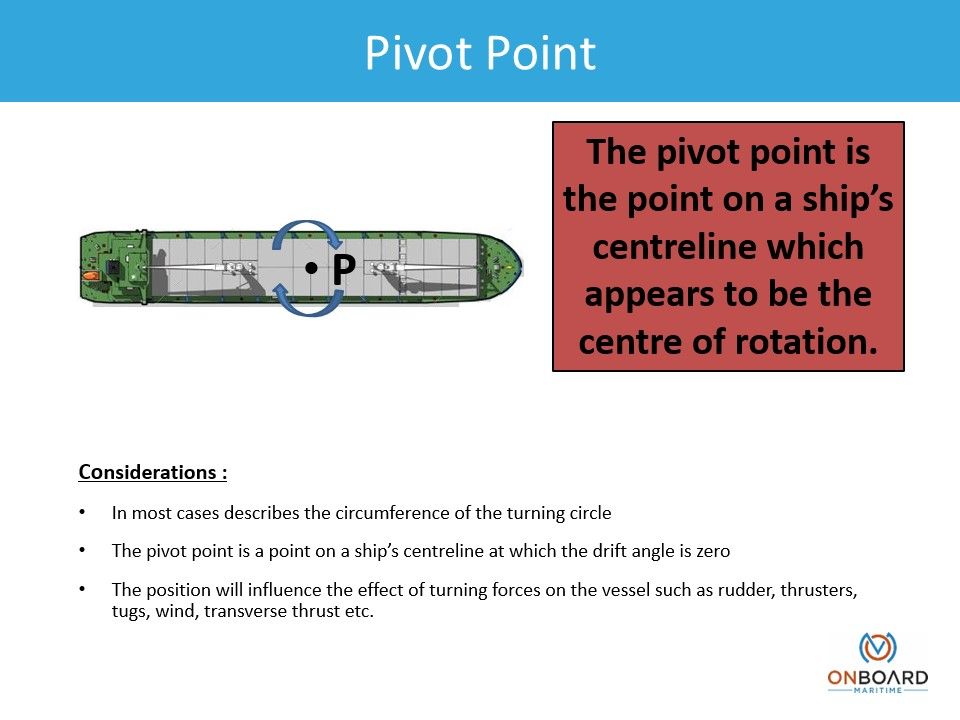
The Pivot Point at Rest
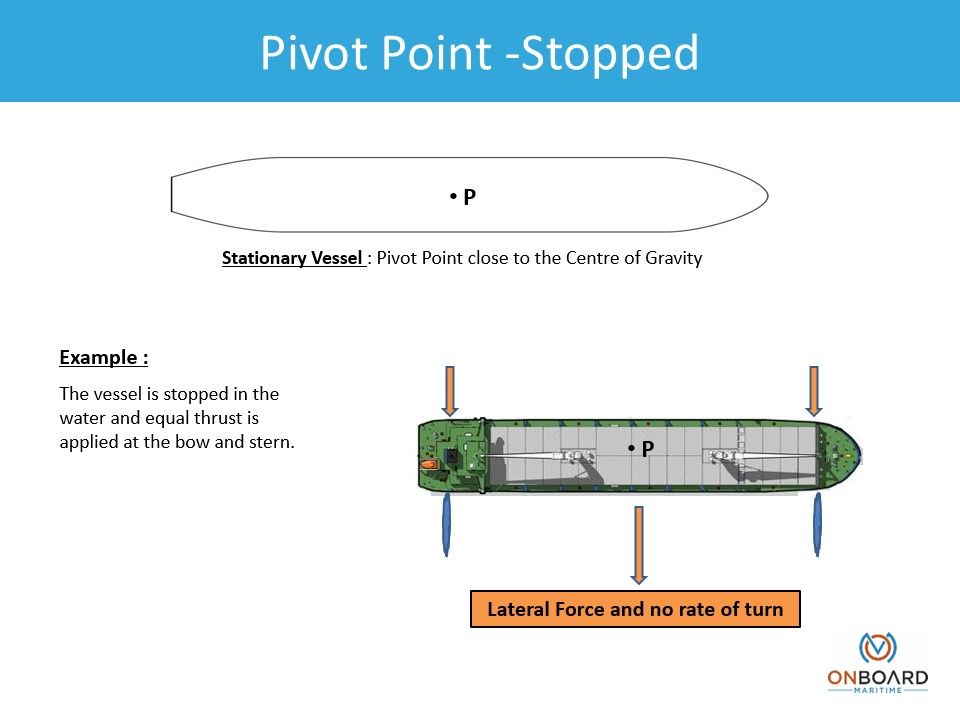
Forward Motion and the Shift in Pivot Point
As a vessel begins moving ahead, the pivot point shifts forward. Initially, resistance from the water is high, causing the pivot point to move beyond the bow. However, as the ship gains momentum and cuts through the water, the resistance decreases, and the pivot point moves back towards the middle, typically settling at about 25-30% of the vessel's length from the bow.
Understanding this shift is essential for manoeuvring. Forces applied at the bow, such as a bow thruster or a tug, will have limited effect on turning. However, forces applied aft—such as the rudder, a stern thruster, or an aft tug—will have a much greater impact due to the longer turning lever between the force application point and the pivot point.
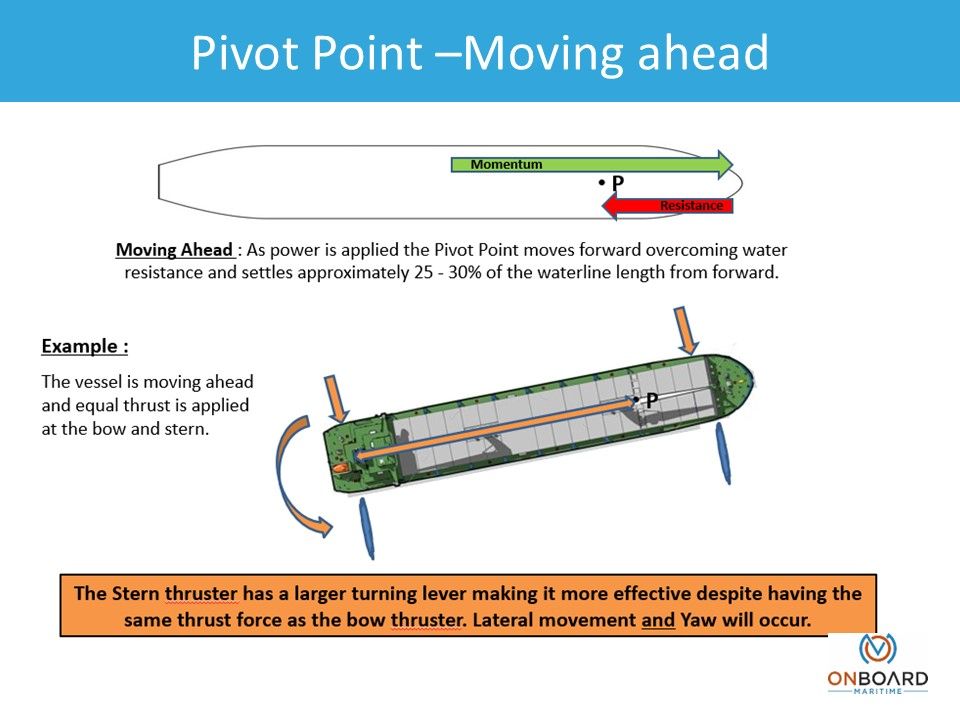
Aft Motion and the Pivot Point
When a vessel moves astern, the pivot point moves towards the stern, but not as far as it moves forward when making headway. Due to the shape of the stern and the additional water resistance, the pivot point generally remains under the accommodation block, around 10-15% of the ship’s length from the stern. In this case, a bow thruster becomes highly effective, allowing for significant steering control while moving astern.
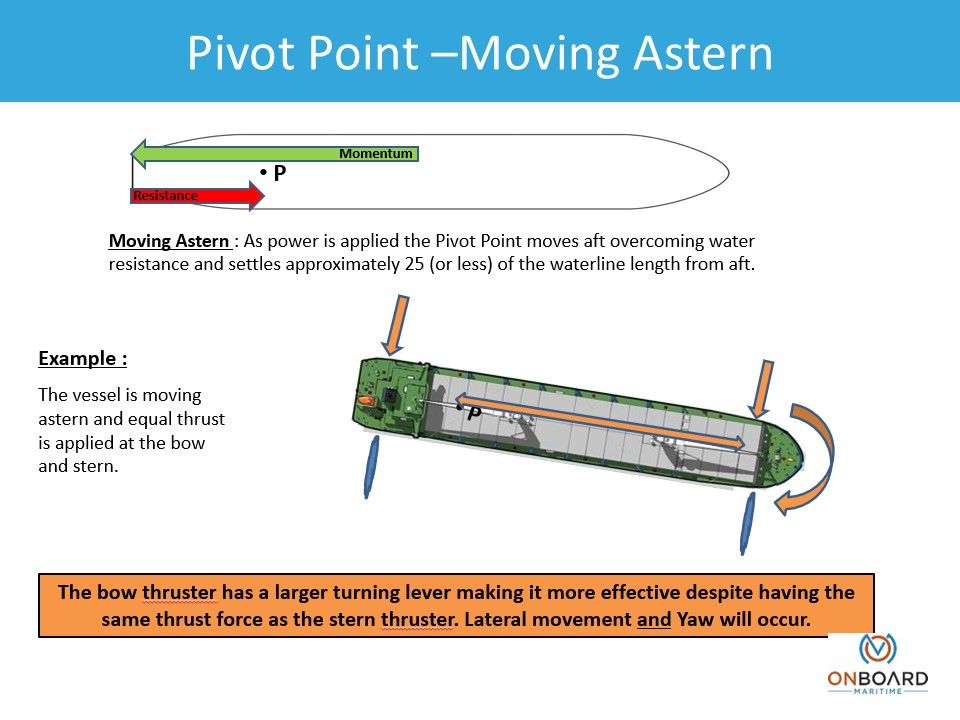
The Effect of Trim on the Pivot Point
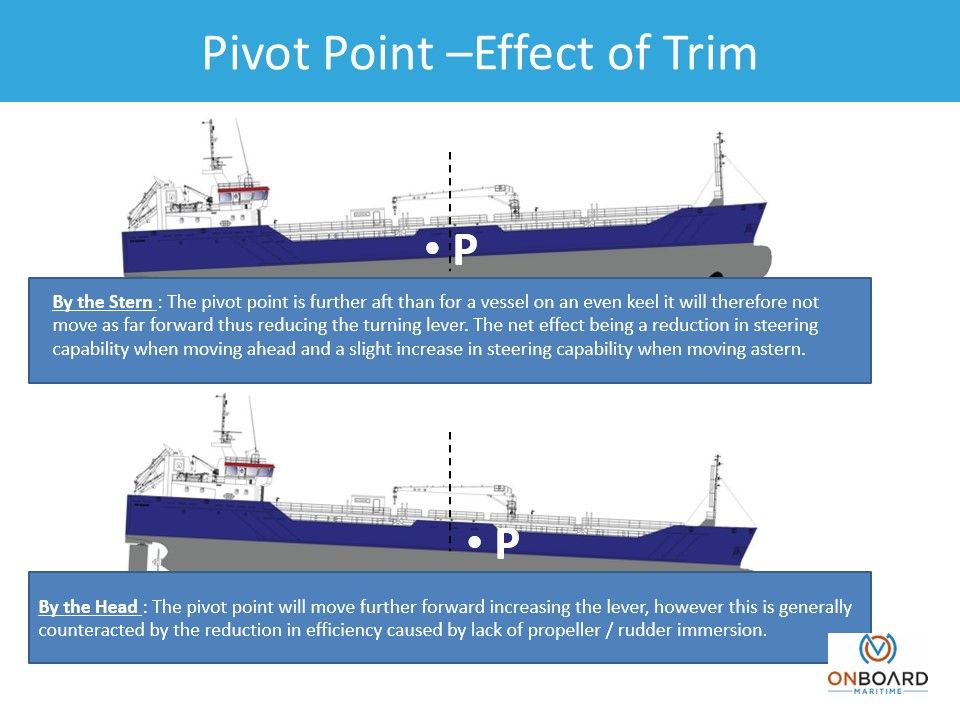
Trim—the difference in draught between the bow and stern—also influences the pivot point.
Trimmed by the bow: The pivot point shifts forward, increasing resistance at the bow and reducing the effectiveness of forward-applied forces.
Trimmed by the stern: The pivot point moves aft, making the vessel more responsive to forces applied at the bow.
Trimmed by the bow: The pivot point shifts forward, increasing resistance at the bow and reducing the effectiveness of forward-applied forces.
Understanding how trim impacts the pivot point helps in predicting how a vessel will behave under different loading conditions.
The Influence of Wind on the Pivot Point
Windage plays a significant role in ship handling, as wind pressure affects the vessel’s movement. The centre of windage is the average point where wind forces act on the ship’s profile. This is typically located towards the stern due to the prominence of the accommodation block.
When stopped: The pivot point is near the middle, while the centre of windage is further aft. This causes the bow to naturally point slightly into the wind as the ship drifts sideways.
When moving ahead: The pivot point moves forward, increasing the turning lever between it and the centre of windage. This makes the bow more likely to swing into the wind.
When moving astern: The pivot point moves aft, reducing the turning lever. The bow tends to fall off the wind while the stern aligns with it.
Write your awesome label here.
Write your awesome label here.
Write your awesome label here.
Write your awesome label here.
Wind Direction and Ship Handling
Beam wind while moving ahead: The pivot point forward of the centre of windage creates a strong turning effect, causing the bow to swing into the wind.
Beam wind while moving astern: The pivot point aft reduces the turning lever, so the bow drifts downwind while the stern seeks the wind.
Wind from ahead: When moving forward, the centre of windage remains aft of the pivot point, keeping the ship stable. However, if the bow starts to drift, it will naturally correct by pointing back into the wind.
Wind from astern: When making headway, a change in wind direction can push the stern sideways, making steering difficult. When making sternway, the stern seeks the wind, creating a natural straightening effect.
Write your awesome label here.
Write your awesome label here.
Write your awesome label here.
Write your awesome label here.
Conclusion
Understanding the pivot point is fundamental to effective ship handling. Whether manoeuvring in confined waters, docking with tugs, or counteracting wind effects, knowing where the pivot point is located and how it shifts with movement, trim, and external forces allows for better control of the vessel.
By mastering these principles, mariners can anticipate how their ship will respond and make informed decisions to ensure safe and efficient operations.

